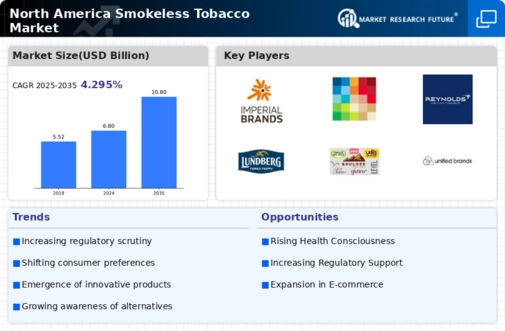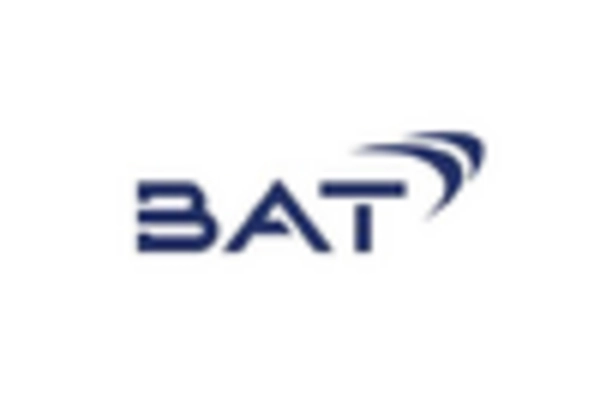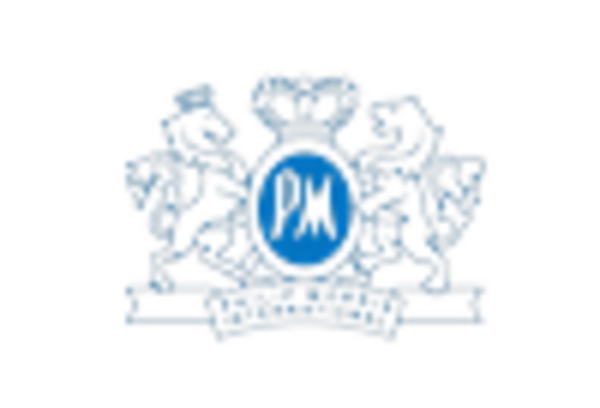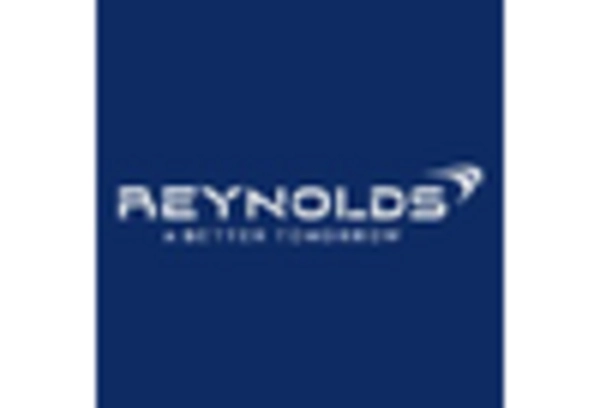Growing Health Consciousness
The increasing awareness of health risks associated with traditional smoking has led consumers to explore alternatives, including smokeless tobacco products. This shift in consumer behavior is evident in North America, where a notable % of smokers are transitioning to smokeless options, perceiving them as less harmful. The smokeless tobacco market is benefiting from this trend, as manufacturers are introducing products that emphasize reduced health risks. Furthermore, public health campaigns advocating for smoking cessation are indirectly promoting smokeless tobacco as a viable alternative. As health consciousness continues to rise, the demand for smokeless tobacco products is likely to increase, potentially expanding the market share of this segment within the broader tobacco industry.
Increased Availability and Accessibility
The expansion of distribution channels for smokeless tobacco products is enhancing their availability and accessibility in North America. Retailers are increasingly stocking a variety of smokeless options, from traditional chew to modern pouches, making it easier for consumers to find and purchase these products. The smokeless tobacco market is benefiting from this trend, as convenience stores, gas stations, and online platforms are becoming key distribution points. This increased accessibility is likely to drive sales, as consumers are more inclined to try smokeless tobacco when it is readily available. Furthermore, promotional strategies and marketing campaigns are also contributing to heightened visibility, potentially attracting new users to the smokeless tobacco market.
Technological Advancements in Production
Technological innovations in the production of smokeless tobacco products are enhancing product quality and consumer appeal. The smokeless tobacco market is witnessing advancements in manufacturing processes, which allow for better flavor retention and improved product consistency. For instance, the introduction of advanced flavoring techniques and packaging solutions has made smokeless products more attractive to consumers. Additionally, the use of technology in product development enables companies to create a wider variety of offerings, catering to diverse consumer preferences. As these technological advancements continue to evolve, they are expected to drive growth in the smokeless tobacco market, potentially increasing overall sales and market penetration.
Regulatory Environment and Market Adaptation
The regulatory landscape surrounding tobacco products is evolving, impacting the smokeless tobacco market in North America. While regulations may pose challenges, they also create opportunities for innovation and market adaptation. Companies are increasingly focusing on compliance with health regulations and marketing restrictions, which may lead to the development of new product lines that meet regulatory standards. For instance, some manufacturers are exploring the creation of smokeless tobacco products with reduced nicotine levels or alternative ingredients to align with health guidelines. This proactive approach to regulation may not only help companies avoid penalties but also position them favorably in a competitive market, potentially enhancing their market share in the smokeless tobacco sector.
Changing Demographics and Consumer Preferences
Demographic shifts in North America are influencing the smokeless tobacco market. Younger consumers, particularly millennials and Gen Z, are showing a growing interest in smokeless tobacco products, driven by changing social norms and preferences. This demographic is more inclined to seek out alternatives to traditional smoking, viewing smokeless options as trendy and socially acceptable. Market data indicates that the usage of smokeless tobacco among younger adults has increased by approximately 15% over the past few years. As these demographic trends continue to evolve, the smokeless tobacco market is likely to adapt, leading to the introduction of new products tailored to the preferences of this emerging consumer base.


















Leave a Comment